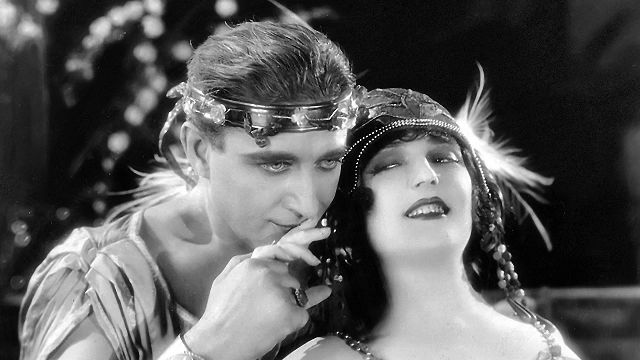Ben-Hur: A Tale of the Christ (1925) 
” The Outstanding Attraction in America. The Greatest Wealth of Drama, Spectacle, Thrills, Awe Inspiring Magnitude, and Most Delicate Love Story ever presented in the History of the Theatres of the World. MIGHTY BEN-HUR”

Director: Fred Niblo
Cast: Ramon Novarro, Francis X. Bushman, May McAvoy
Synopsis: A Jewish prince seeks to find his family and revenge himself upon his childhood friend who had him wrongly imprisoned.
Ben-Hur is the white elephant the newly-formed MGM studio inherited from the Goldwyn portion of the merger, and many would have been tempted to simply shut down production and cut their losses. However, to their credit, MGM persevered, calling the Italian-based shoot back to their Culver City studio so that wonder boy Irving Thalberg could keep an eye on costs, and experienced hand Fred Niblo, who already had such prestige productions as The Mark of Zorro (1920) and Blood and Sand (1922) under his belt, could take over the directorial reins from an out-of-his-depth Charles Brabin. The end result was a polished piece of work, and the most expensive silent picture ever made despite Thalberg eventually controlling the purse strings, but it never quite performed at the box office the way MGM had hoped. Nevertheless, Thalberg had avoided a financial disaster, and its modest box office profit combined with the record-breaking success of King Vidor’s The Big Parade, helped ensure the fledgling MGM’s survival.
The story of Ben-Hur follows the exploits of its title character Judah Ben-Hur (Ramon Novarro), a wealthy Israelite living under the rule of the Roman Empire, whose reunion with childhood friend Messala (Francis X. Bushman) is marred by Messala’s anti-Semitism. As Judah watches the victorious Roman parade into his city, he inadvertently dislodges a roof tile which kills the emperor. Messala takes a cruel pleasure in imprisoning Ben-Hur, evicting his mother and sister, and confiscating all his riches. Sentenced to life in a slave-galley, Ben-Hur refuses to let the harsh conditions crush his spirit, a fact which brings him to the attention of Roman nobleman Arrius (Frank Currier). When Ben-Hur saves Arrius’s life during a pirate attack, the older man adopts him as his son.
Comparisons with William Wyler’s epic 1959 version of Ben-Hur are as inevitable as they are unfair. With a running time that’s more than an hour shorter than the later version, it’s inevitable that this version lacks much of the sophisticated allusions and depth of character of Wyler’s version. The characters are drawn in broad black-or-white strokes with no room for the shades of grey that would add an element of realism to their motivations, and the 1925 version suffers as a result. However, as a spectacle, Niblo’s version still manages to deliver after more than eighty years. While its pirate battle scenes perhaps can’t compare to the later version, they still provide an exciting set piece, and the remarkable chariot race is arguably the equal of the later version. Second-Unit director B. Reeves Eason was responsible for most of the filming of the race, and he captured the action from some astonishing angles, including from beneath the horses as they thunder over the track. Even today, the sequence still gets the pulse racing.
Ben-Hur: A Tale of the Christ is rarely seen today (a version with the English intertitles spoken in Russian is available on the internet), which, considering its importance in both the development of film and, more importantly, the development of Metro-Goldwyn-Mayer, is something of a surprise. While it perhaps doesn’t quite qualify for a place amongst the first tier of classic silent movies, Ben-Hur: A Tale of the Christ certainly comes close.
(Reviewed 24th December 2012)
httpv://www.youtube.com/watch?v=jZaHtnKbswQ
